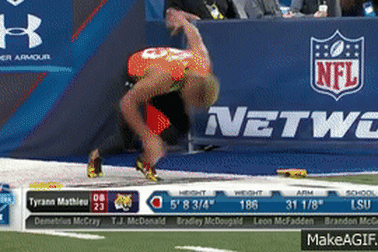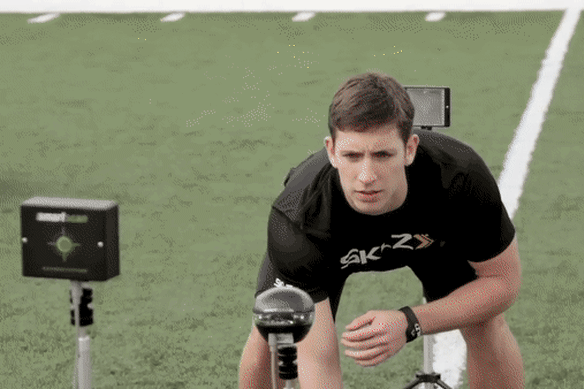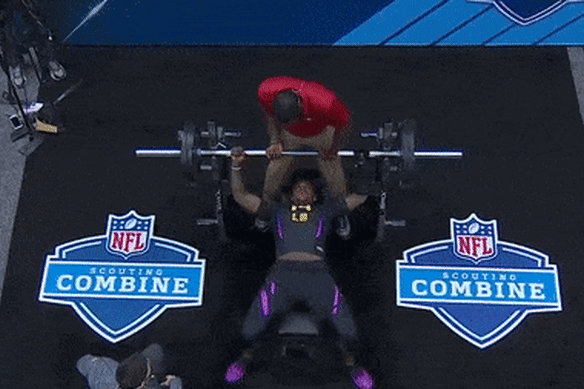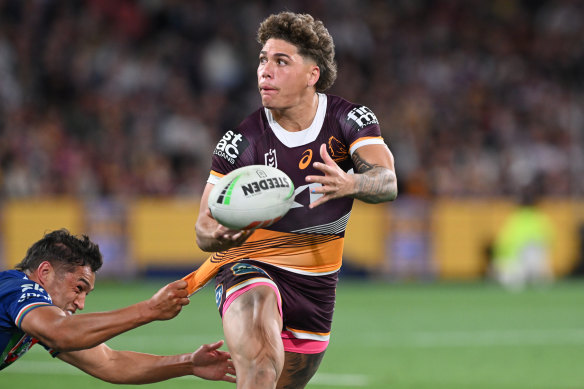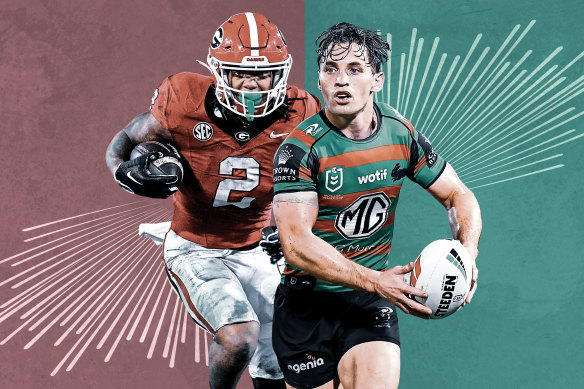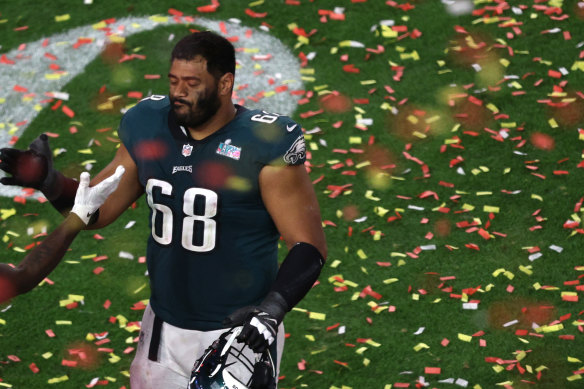Save articles for later
Add articles to your saved list and come back to them any time.
When the NRL returns to Australia from its historic season-opening double-header in Las Vegas, it doesn’t want to do so empty-handed. The aim is not only to lure new fans, but also the best athletes who miss the cut to make the NFL.
To that end, the NRL plans to run an NFL-style combine, which is used to identify the hopefuls who have the physical attributes to succeed in professional rugby league. The combine invites the best aspiring footballers to a day of testing, likely to be held in Vegas on the eve of the Sea Eagles-Rabbitohs and Roosters-Broncos clashes.
If you’re an American athlete keen to crack the NRL, this is what you need to do:
1 – 40-metre sprint
If you’re an outside back in the NRL, you’ll want to do this in about 4.5 seconds. That would give you a chance to foot it with speedsters Ronaldo Mulitalo, Jason Saab, Maika Sivo and Dom Young.
The fastest college footballers could match it with the NRL’s speed men.
2 – Pro-agility drill
Also known as the “5-10-5” or the “20-yard shuttle”, this drill tests lateral movement. This requires athletes to accelerate five metres, change direction, accelerate to 10 metres, change direction again and accelerate five metres to the finish line.
The pro-agility drill is a measure of explosiveness and lateral movement.
3 – Vertical jump
This one is self-explanatory and a staple of NFL combines. You need to post a jump height between 89 and 102 centimetres, depending on your size and the position you are trying to fill, to catch the eye of talent scouts. Scouts could also measure a broad jump. Byron Jones set the NFL combine record with a long leap of 3.73 metres.
4 – Bench press and squat
Looking for athletes who can bench 225 pounds (102kg) as often as possible. A 110kg NRL back-rower should be able to pump up 10-12 repetitions. Players should also be able to do two to three repetitions of a 150kg squat.
The bench press is a staple at the NFL combine.
5 – Bronco test
This is a speed and endurance trial that has replaced the traditional beep and yo-yo tests at most NRL clubs. It involves running to-and-from a start line to 20-, 40- and 60-metre marks, five times without a break. While the NRL’s very fittest could do it in about four-and-a-half minutes, a time of five minutes would be acceptable for most positions.
6 – NRL-specific drills
Candidates should be able to master simple two-on-one and three-on-two drills, which demonstrate the ability to attack or defend space. Prospective fullbacks and wingers will also be tested under a ball machine, which replicates bombs and other kicks that need to be caught and returned. They will also be assessed on wrestling techniques and ruck plays.
Brisbane fullback Reece Walsh knows how to create space for his teammates.Credit: Getty
A maximum of 335 candidates are invited to try out at the NFL’s combine, while only about 250 are drafted to clubs. That means that the vast majority of the 15,000 Division 1 college footballers are lost to the sport, providing a rich talent pool of athletes for the NRL to target.
“The NRL needs to be looking for athletic, powerful athletes,” said NRL sports agent Chris Orr, whose firm Pacific Sports Management has run rugby league combines in Australia for the past five years and also was engaged by the NFL in 2018 to run the inaugural NFL International Combine, along with attending the NFL combines over the past decade.
University of Georgia running back Kendall Milton and South Sydney forward Cameron Murray.Credit: Getty Images, NRL Photos
“I don’t think the NRL would be looking for a spine player, in the same way the NFL pathways aren’t searching for a quarterback. We are looking at wingers, centres, back-rowers and props.
“There’s about 14,500 athletes who have trained like professionals for four years in state-of-the-art facilities and played in front of 100,000 people, who have come to the end of their sporting journey.
“Any college player being considered needs to be identified immediately, so they can be given rugby league video drills, online education and data on what they need to achieve so they can show off their best selves come next March.”
Orr was responsible for opening the door for clients Valentine Holmes and Jordan Mailata. North Queensland Cowboys star Holmes spent several months on the practice squad for the New York Jets, while Mailata transitioned from a reserve grader at South Sydney into a Super Bowl star currently on a $99 million contract with the Philadelphia Eagles.
Australian Jordan Mailata playing for the Philadelphia Eagles at the Super Bowl in February.Credit: Getty
The late Manfred Moore, who played five games for the Newtown Jets in 1977, is the only NFL player to date to have played first-grade rugby league, while Jarryd Hayne went the other way in 2015.
Orr, who works closely with colleges and NFL clubs, feels top American college footballers could make the transition to the NRL with the right guidance.
“What I do know about college American athletes is that if you give them a task and set them goals, they will train their butts off to achieve them, especially if you give them a professional contract as a carrot,” he said.
“Look at Jordan Mailata, who thought that he would play in a Super Bowl in five years? If we get them early enough, at 21 and 22, it will work.
“Imagine if we did it five years in a row, that we brought five or 10 or 15 players at a time. They could filter through all our grades and competitions and you would start to get Americans watching the code. That’s what you need if you want the American audiences to buy in.”
Sports news, results and expert commentary. Sign up for our Sport newsletter.
Most Viewed in Sport
From our partners
Source: Read Full Article
